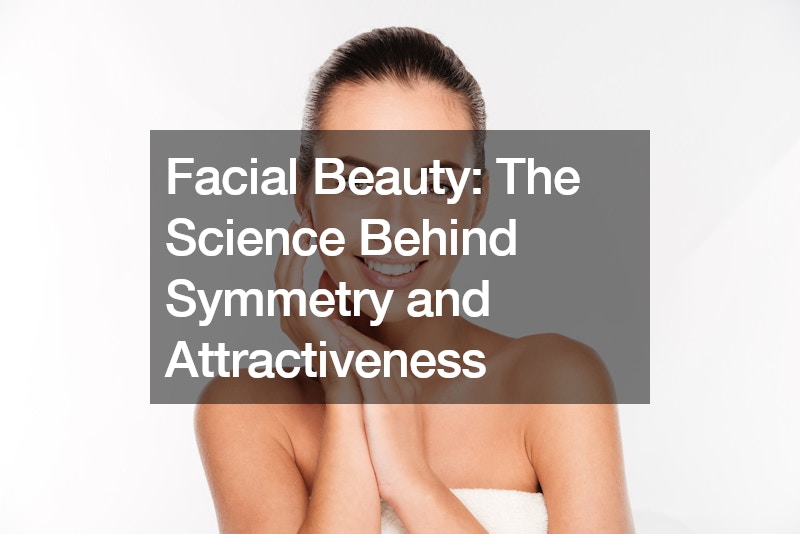
Facial beauty has long been a subject of fascination and study, transcending cultures and epochs. While beauty may seem to be in the eye of the beholder, scientific research suggests that certain elements, like symmetry, play a crucial role in how we perceive attractiveness. This exploration into the science of facial beauty reveals that symmetry, along with other factors such as averageness and sexual dimorphism, significantly influences our judgments of attractiveness.
The Evolutionary Perspective
From an evolutionary standpoint, symmetry is considered a marker of genetic health and mate quality. Symmetrical features suggest that an individual has developed without significant genetic disturbances, infections, or environmental stressors.
This notion is rooted in the concept of fluctuating asymmetry, which refers to random deviations from perfect symmetry. These deviations can occur due to genetic mutations, developmental instability, or environmental factors.
Research indicates that symmetrical faces are often perceived as more attractive because they signal good health and robust genetics. In contrast, pronounced asymmetries can be associated with inbreeding, premature birth, or certain psychological conditions. For example, artificially enhancing facial symmetry in photographs has been shown to increase perceived attractiveness, even when the individual features remain unchanged.
Types of Symmetry
It’s essential to distinguish between two types of asymmetry: fluctuating and directional. Fluctuating asymmetry refers to random, individual-specific deviations from perfect symmetry. These can result from minor developmental anomalies and are usually undesirable from an evolutionary perspective. On the other hand, directional asymmetry, such as the preference for right-handedness observed in about 85% of the population, is consistent across a population and does not typically signal poor genetic quality.
Interestingly, some degree of asymmetry might actually enhance attractiveness by making a face appear more expressive. Studies have found that during spontaneous speech, most people tend to make more gestures with their right hand, and facial expressions are often more asymmetric than posed ones. This kind of asymmetry can contribute to a dynamic and expressive appearance, adding to an individual’s charm.
Assessing Symmetry
One common method of assessing facial symmetry is through a bilateral flip, where a face is split down the middle, and each half is mirrored. However, this method has limitations. A slight tilt of the head or deviation from a frontal view can amplify asymmetries, making the face appear abnormally wide or narrow. A more accurate approach involves blending the original face with its mirrored version to correct for these distortions.
In another method, researchers manually adjust facial points to create perfect symmetry using digital tools. This technique helps in studying how specific asymmetries affect attractiveness, revealing that the most noticeable asymmetries often occur in the eyes and nose. The eyes are usually the first feature we observe on a face, making any deviations in eye alignment or canthal tilt particularly conspicuous. Similarly, a crooked nasal bridge can be very noticeable due to the nose’s central position on the face.
Symmetry Across Facial Regions
Research shows that asymmetry tends to vary across different regions of the face. The lower third, particularly the jaw, is most prone to asymmetry. Factors such as diet and habitual behaviors can influence jaw development. For instance, the side predominantly used for chewing might develop stronger masseter muscles, leading to asymmetry. The midface, containing complex soft tissue structures like the eyes and nose, is intermediate in its susceptibility to asymmetry. In contrast, the upper third, including the cranium, is least prone to asymmetry due to its growth pattern, which is less influenced by external forces.
Genetic and Environmental Influences
The causes of facial asymmetry are numerous and can be broadly categorized into three types: malformations (shape-related defects from abnormal development), deformations (defects caused by external forces, such as trauma), and disruptions (breakdowns in the development process). There is also a debate on the heritability of asymmetry. Some studies suggest a weak but significant genetic component, while others emphasize environmental factors.
Correcting Asymmetry
For most people, minor facial asymmetries are relatively easy to correct. Cosmetic procedures such as fillers can help produce a more even facial contour. Botox can be used to adjust asymmetries in the eyebrows or forehead, while rhinoplasty can straighten a crooked nasal bridge. Consulting a facial balancing doctor can provide tailored solutions for these cosmetic adjustments. For more severe cases involving the jaw, orthognathic surgery might be required to correct underlying skeletal issues. Alternatively, implants can be used to enhance weak growth and achieve better symmetry, especially since they can be custom-made to fit an individual’s specific needs.
Final Thoughts
Symmetry plays a vital role in the perception of facial attractiveness, reflecting underlying genetic health and developmental stability. While perfect symmetry is rare, and some degree of asymmetry can enhance expressiveness, significant asymmetries are generally seen as less attractive. Advances in cosmetic procedures provide effective solutions for correcting asymmetry, helping individuals achieve a more balanced and aesthetically pleasing appearance. Understanding the science behind facial symmetry not only unravels the mysteries of attractiveness but also offers practical insights into enhancing one’s facial harmony.
.





